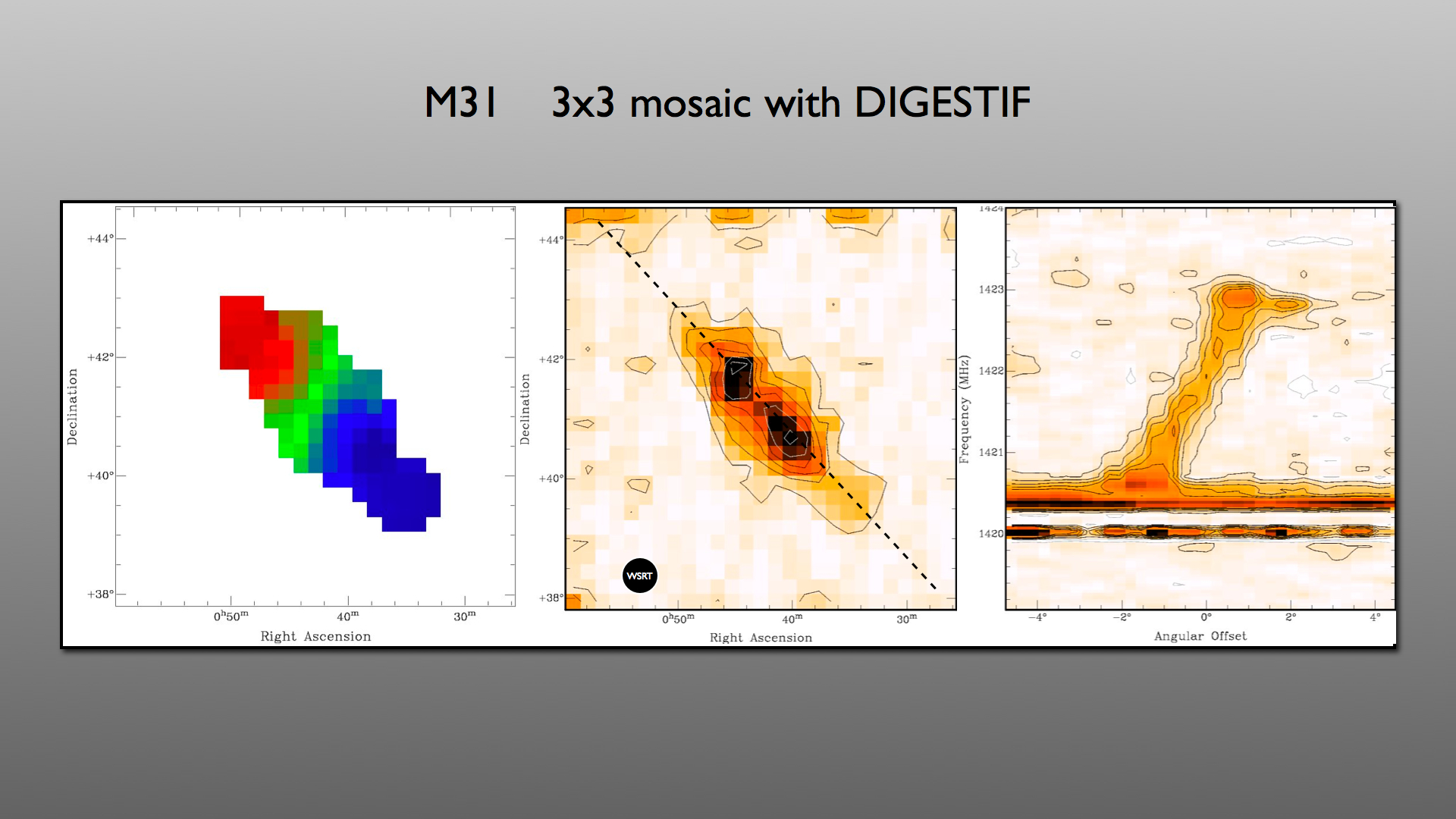Daily Image
19-03-2008Citius, Altius, Fortius
| Submitter: | Apertif team |
| Description: | The pictures above show that the images we make with Digestif keep on getting bigger, better and nicer. To underline the power of Digestif to image large areas on the sky, we have now made a small mosaic on M31 of 3x3 pointings, covering an area of about 6x6 degrees. The emission of neutral hydrogen of M31 detected in this way is shown in the central panel. For each pointing (integrated for 6.7 seconds) we make 121 beams, so to make this image, more than 1000 focal-plane array beams have been used. For comparison, the area of a single WSRT beam is indicated. Because Digestif records the spectrum for every position, we can measure the motions of the neutral hydrogen in M31 by using the Doppler effect (see http://en.wikipedia.org/wiki/Doppler_effect ). On the right is shown what is called a "position-velocity" plot. The horizontal axis corresponds to position along a line over M31 (indicated by the dashed line in the central panel) while the vertical axis is frequency. Due to the internal motions of M31, the bottom-right part of M31 is coming towards us at a higher velocity than the top-left bit. Because of this, the emission from the bottom-right is seen at higher frequencies than that from the top-left, as is visible in the right panel. One can use this to measure the velocities of the gas in each position in M31. This is illustrated in the left panel where colour represents relative velocity: blue means coming towards us at speeds between 350-500 km/s, green towards us between 200-300 km/s while red indicates 0-150 km/s. |
| Copyright: | Astron |
| Tweet |  |
